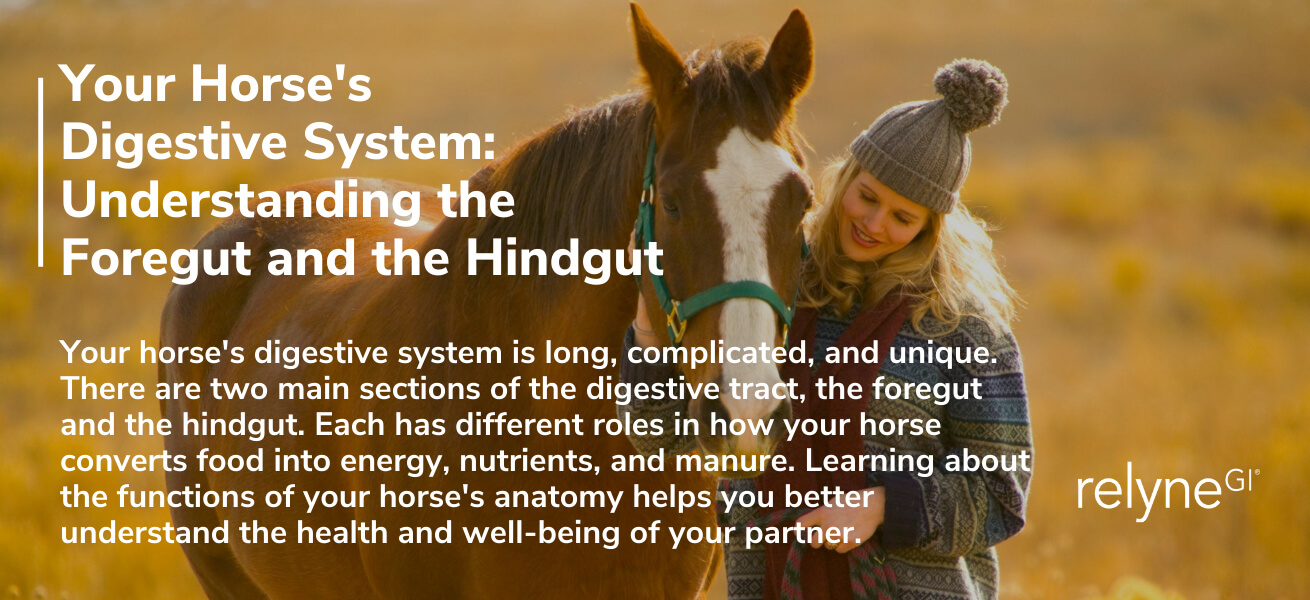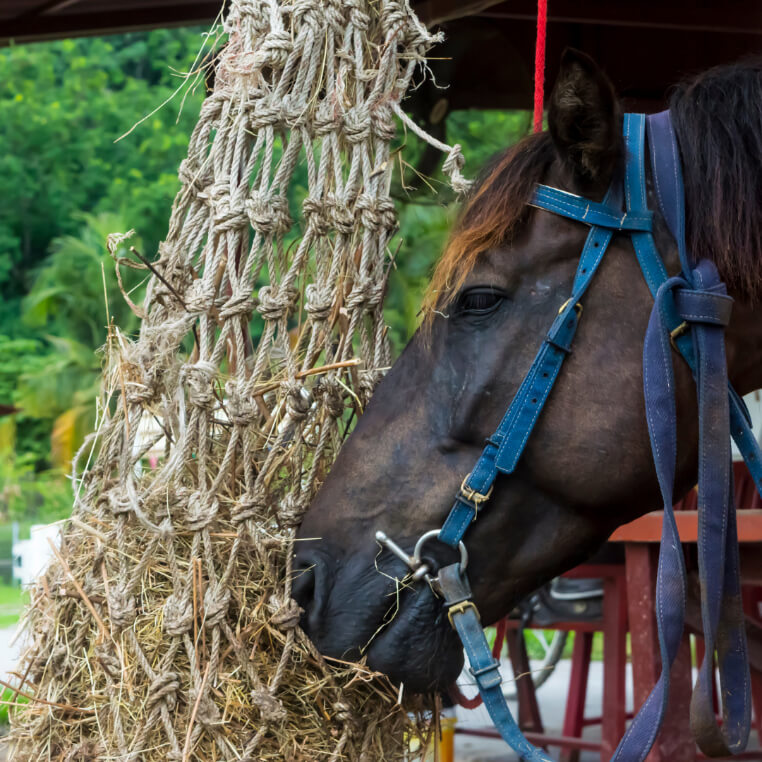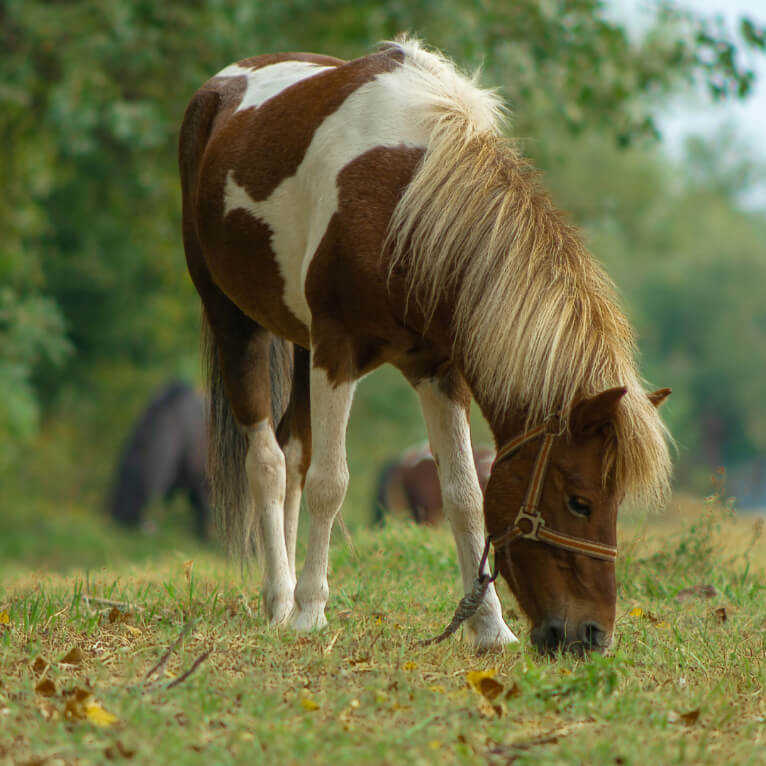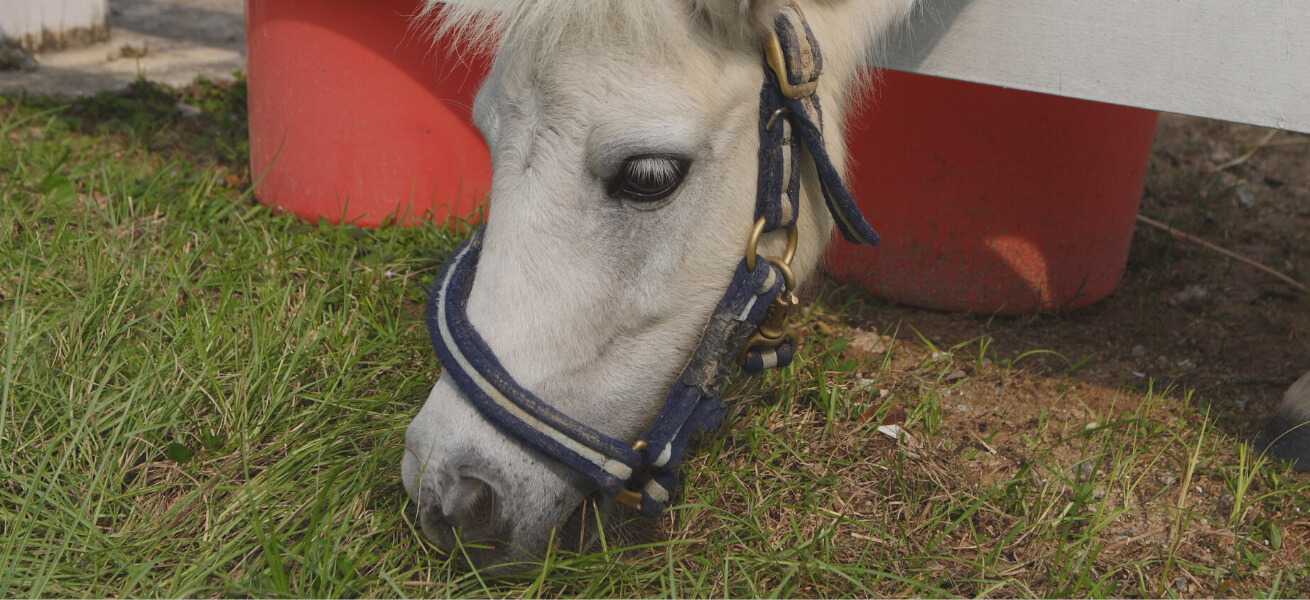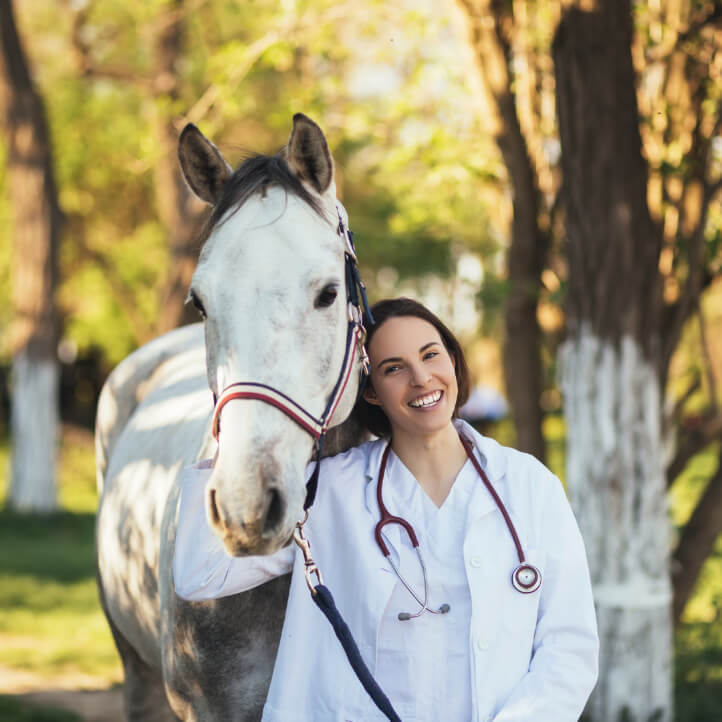The beginnings of your horse’s digestion process…
The horse’s digestive system begins at the mouth and includes teeth, the tongue, and salivary glands.
Every bite of food that your horse takes needs to be chewed and mixed with saliva. The chewing action makes food pieces smaller for easy transport to the stomach and softens the food to begin digestion.
Saliva serves to lubricate food, making swallowing much more comfortable. Additionally, the sodium bicarbonate component in the saliva buffers acids in the stomach, and salivary amylase is an enzyme that begins to digest carbohydrates. Horses can produce approximately 10 gallons of saliva per day and only make saliva when a horse is eating.
The next significant portion of digestion anatomy is the pharynx, where the digestive system and the respiratory system of the horse meet. Your horse’s soft palate creates a one-way valve, preventing food from entering the lungs. This mechanism also prevents food from traveling backward from the esophagus to the mouth.
Now your horse’s forage and feeds enter the esophagus, which connects the pharynx to the stomach. Skeletal muscle makes up most of this transport tube, transitioning to smooth muscle as it enters the stomach.
To make it to the stomach, food in the esophagus must pass through the cardiac sphincter, a one-way opening. This structure is the primary reason horses are unable to vomit.
The horse’s stomach
The horse’s stomach is surprisingly small, considering how large horses are. With a capacity of 11 liters, the stomach is perfectly designed for the natural grazing behaviors that promote small amounts of food nibbled on throughout the day.
The stomach of the horse is divided into two areas, the lower glandular portion, and the upper non-glandular portion. The glands of the lower stomach secrete mucous, digestive enzymes, and hydrochloric acid. Mucous protects the lining of the lower stomach from these caustic secretions.
The upper stomach does not have protection from the secretions of the glandular region. As such, horses are susceptible to damage from acids and enzymes. Allowing your horse to eat continuously throughout the day keeps the stomach working. An empty stomach can splash those acids around, contributing to gastric ulcers.
Food usually spends less than 30 minutes in the stomach, then moving along to the small intestine. Nutrients begin their breakdown in the stomach, and most are absorbed in the small intestine.
The small intestines of the horse
The junction between the stomach and the first part of the small intestine is the pyloric sphincter. This gateway into the intestines has the important job of gatekeeping the stomach acids from the intestines.
There are some secretions of the small intestine to further the digestive process, released primarily from the pancreas. Some buffering agents, also released by the pancreas, work to reduce the acidity of the food.
Carbohydrates begin breaking down in the small intestines. Proteins are broken down by protease enzymes, and lipases and bile from the liver work to break up fats and suspend them in water. Horses are without a gall bladder to store bile, so the liver constantly makes and secrets it.
The small intestine has a few other functions for your horse. Most amino acid absorption occurs there, and nutrients pass through the small intestine’s wall into the bloodstream.
Typically, a horse’s feed takes 3 or 4 hours to move through the small intestine, but it can be as quick as one hour. Longer transit times in the small intestine give the enzymes more time to process the feeds and forage. In turn, starches have more time to digest. Horses can develop colic and laminitis when too many sugars enter the hindgut too rapidly. It’s thought that adding oils to a horse’s diet can increase the time that food spends traveling through the small intestine, thus reducing the volume of undigested sugars that land in the hindgut.
The horse’s hindgut
And then to the hindgut! The large intestine of a horse is commonly referred to as the hindgut. The caecum, also known as the ascending colon, the small colon, rectum, and anus comprise the large intestine.
Unlike the foregut that uses enzymes to digest food, the hindgut relies on the microbes that live in your horse for digestion. Fiber from plants and undigested starches are broken down by billions of bacteria into volatile fatty acids (VFA’s). These VFAs can be absorbed through the gut wall and used by the horse.
The caecum of the horse
The beginning of the hindgut is the caecum, a blind sac. One opening serves as entrance and exit to this portion of the digestive system, at the top of the caecum. The process of microbes fermenting your horse’s forage begins here, and food can remain in the caecum for six or more hours.
The caecum’s precarious balance of bacteria can be disrupted by sudden changes of feed, and can take weeks to normalize again. It’s often advised to change a horse’s diet over 1 to 2 weeks to avoid significant disruptions to the microbial balance. Additionally, the caecum is susceptible to problems if feed arrives without appropriate amounts of water.
The large colon
The large colon has a right and left ventral portion, near the belly, and a higher dorsal portion towards your horse’s back. Three U-shaped turns occur in the large colon as well. The right and left ventral portions of the large colon consist of a series of pouches, and can be palpated upon a rectal exam. While this design is wonderful for the continued fermentation of fiber, the pouches may twist and fill with gas, causing colic. Feed can also remain in the large colon for days.
The small colon
The small colon is about the same length as the large colon but much more narrow, about 10 cm in diameter. What remains of your horse’s food is unable to be used by your horse and thus becomes manure. The small colon takes water from the ingesta and forms faecal balls. Your horse’s rectum and anus then expel that manure from your horse.
Your horse’s digestive system is a delicate balancing act, often interrupted by feed changes and stress. Learning to notice changes to your horse’s eating habits and manure can alert you to health problems. It’s also vital that we work to prevent digestive issues like ulcers and colic. Using high-quality feed and supplements, slow feeding systems, and keeping your horse moving all support gut health.
If you would like to find out more on how you can support your horse’s digestion, please book a call with the relyneGI support team HERE.
